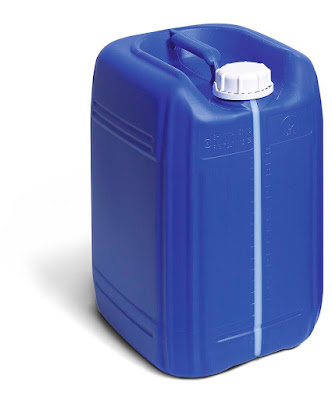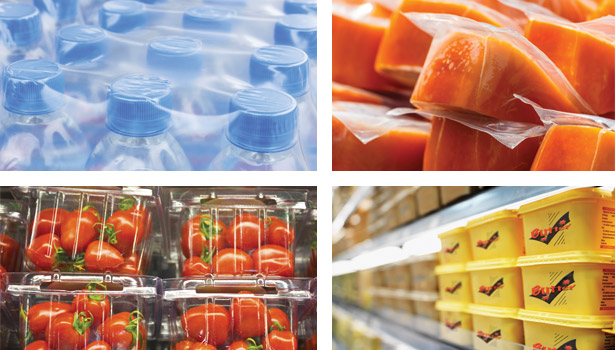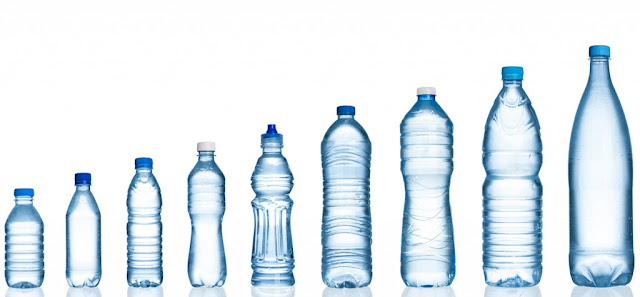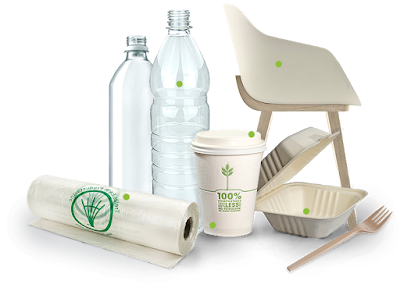Polyethylene (PE)
Polyethylene or polythene is the most common plastic. The annual global production is around 80 million tonnes. Its primary use is in packaging (plastic bags, plastic films, geomembranes, containers including bottles, etc.).
Polyethylene is not readily biodegradable, and thus accumulates in landfills. However, there are a number of species of bacteria and animals that are able to degrade polyethylene.
PE has the features of lower specific gravity, chemical stability and water and chemical resistance, excellent strength and flexibility (soft and bendable) and high formability. PE is classified into High Density Polyethylene, Low Density Polyethylene and Linear Low Density Polyethylene.
Polypropylene (PP)
Polypropylene, also known as polypropene, is a thermoplastic polymer used in a wide variety of applications. An addition polymer made from the monomer propylene, it can be produced in a variety of structures giving rise to applications including packaging and labeling, textiles, plastic parts and reusable containers of various types, laboratory equipment, automotive components, and medical devices.
As polypropylene is resistant to fatigue, most plastic living hinges, such as those on flip-top bottles, are made from this material. However, it is important to ensure that chain molecules are oriented across the hinge to maximise strength. Polypropylene is used in the manufacturing piping systems; both ones concerned with high-purity and ones designed for strength and rigidity (e.g. those intended for use in potable plumbing, hydronic heating and cooling, and reclaimed water). This material is often chosen for its resistance to corrosion and chemical leaching, its resilience against most forms of physical damage, including impact and freezing, its environmental benefits, and its ability to be joined by heat fusion rather than gluing.
Ethylene vinyl alcohol (EVOH)
Ethylene vinyl alcohol is a formal copolymer of ethylene and vinyl alcohol. Because the latter monomer mainly exists as its tautomer acetaldehyde, the copolymer is prepared by polymerization of ethylene and vinyl acetate to give the ethylene vinyl acetate (EVA) copolymer followed by hydrolysis.
The plastic resin is commonly used as an oxygen barrier in food packaging. It is better than other plastics at keeping air out and flavors in, is highly transparent, weather resistant, oil and solvent resistant, flexible, moldable, recyclable, and printable. Its drawback is that it is difficult to make and therefore more expensive than other food packaging. EVOH is used in a liquid embolic system in interventional radiology, e.g. in Onyx.[4] Dissolved in dimethyl sulfoxide (DMSO) and mixed with a radiopaque substance, ethylene vinyl alcohol copolymer is used to embolize blood vessels.
Polyethylene Terephthalate (PET)
Polyethylene terephthalate, commonly abbreviated PET, PETE, or the obsolete PETP or PET-P, is the most common thermoplastic polymer resin of the polyester family and is used in fibres for clothing, containers for liquids and foods, thermoforming for manufacturing, and in combination with glass fibre for engineering resins. PET is an excellent water and moisture barrier material, plastic bottles made from PET are widely used for soft drinks. For certain specialty bottles, such as those designated for beer containment, PET sandwiches an additional polyvinyl alcohol (PVOH) layer to further reduce its oxygen permeability.
At least one species of bacterium in the genus Nocardia can degrade PET with an esterase enzyme. Japanese scientists have isolated a bacterium Ideonella sakaiensis that possesses two enzymes which can break down the PET into smaller pieces that the bacterium can digest. A colony of I. sakaiensis can disintegrate a plastic film in about six weeks.
Plant-Derived Plastics (Bioplastics)
Bioplastics are plastics derived from renewable biomass sources, such as vegetable fats and oils, corn starch, or microbiota. Bioplastic can be made from agricultural by-products and also from used plastic bottles and other containers using microorganisms. Common plastics, such as fossil-fuel plastics, are derived from petroleum or natural gas. Production of such plastics tends to require more fossil fuels and to produce more greenhouse gases than the production of biobased polymers.
To globally reduce environmental burden, we have conducted R&D to increase use of plant-derived plastics in packaging. Typical materials include polylactic acid (PLA) derived from corn which will be converted into a low-molecular through hydrolysis process and finally decomposed into carbon dioxide and water through microbial action.
Polyethylene or polythene is the most common plastic. The annual global production is around 80 million tonnes. Its primary use is in packaging (plastic bags, plastic films, geomembranes, containers including bottles, etc.).
Polyethylene is not readily biodegradable, and thus accumulates in landfills. However, there are a number of species of bacteria and animals that are able to degrade polyethylene.
 |
| large container |
 |
PE has the features of lower specific gravity, chemical stability and water and chemical resistance, excellent strength and flexibility (soft and bendable) and high formability. PE is classified into High Density Polyethylene, Low Density Polyethylene and Linear Low Density Polyethylene.
Polypropylene (PP)
Polypropylene, also known as polypropene, is a thermoplastic polymer used in a wide variety of applications. An addition polymer made from the monomer propylene, it can be produced in a variety of structures giving rise to applications including packaging and labeling, textiles, plastic parts and reusable containers of various types, laboratory equipment, automotive components, and medical devices.
 |
| plastic bottle caps |
 |
| Polypropylene made Water bottles |
As polypropylene is resistant to fatigue, most plastic living hinges, such as those on flip-top bottles, are made from this material. However, it is important to ensure that chain molecules are oriented across the hinge to maximise strength. Polypropylene is used in the manufacturing piping systems; both ones concerned with high-purity and ones designed for strength and rigidity (e.g. those intended for use in potable plumbing, hydronic heating and cooling, and reclaimed water). This material is often chosen for its resistance to corrosion and chemical leaching, its resilience against most forms of physical damage, including impact and freezing, its environmental benefits, and its ability to be joined by heat fusion rather than gluing.
Ethylene vinyl alcohol (EVOH)
Ethylene vinyl alcohol is a formal copolymer of ethylene and vinyl alcohol. Because the latter monomer mainly exists as its tautomer acetaldehyde, the copolymer is prepared by polymerization of ethylene and vinyl acetate to give the ethylene vinyl acetate (EVA) copolymer followed by hydrolysis.
 |
| food packing |
The plastic resin is commonly used as an oxygen barrier in food packaging. It is better than other plastics at keeping air out and flavors in, is highly transparent, weather resistant, oil and solvent resistant, flexible, moldable, recyclable, and printable. Its drawback is that it is difficult to make and therefore more expensive than other food packaging. EVOH is used in a liquid embolic system in interventional radiology, e.g. in Onyx.[4] Dissolved in dimethyl sulfoxide (DMSO) and mixed with a radiopaque substance, ethylene vinyl alcohol copolymer is used to embolize blood vessels.
Polyethylene Terephthalate (PET)
Polyethylene terephthalate, commonly abbreviated PET, PETE, or the obsolete PETP or PET-P, is the most common thermoplastic polymer resin of the polyester family and is used in fibres for clothing, containers for liquids and foods, thermoforming for manufacturing, and in combination with glass fibre for engineering resins. PET is an excellent water and moisture barrier material, plastic bottles made from PET are widely used for soft drinks. For certain specialty bottles, such as those designated for beer containment, PET sandwiches an additional polyvinyl alcohol (PVOH) layer to further reduce its oxygen permeability.
 |
| PET material plastics bottles |
At least one species of bacterium in the genus Nocardia can degrade PET with an esterase enzyme. Japanese scientists have isolated a bacterium Ideonella sakaiensis that possesses two enzymes which can break down the PET into smaller pieces that the bacterium can digest. A colony of I. sakaiensis can disintegrate a plastic film in about six weeks.
Plant-Derived Plastics (Bioplastics)
Bioplastics are plastics derived from renewable biomass sources, such as vegetable fats and oils, corn starch, or microbiota. Bioplastic can be made from agricultural by-products and also from used plastic bottles and other containers using microorganisms. Common plastics, such as fossil-fuel plastics, are derived from petroleum or natural gas. Production of such plastics tends to require more fossil fuels and to produce more greenhouse gases than the production of biobased polymers.
 |
| bio plastics |
 |
| Plant-Derived Plastics (Bioplastics) |
To globally reduce environmental burden, we have conducted R&D to increase use of plant-derived plastics in packaging. Typical materials include polylactic acid (PLA) derived from corn which will be converted into a low-molecular through hydrolysis process and finally decomposed into carbon dioxide and water through microbial action.
Plastic Bottle Manufacturers in kerala
|